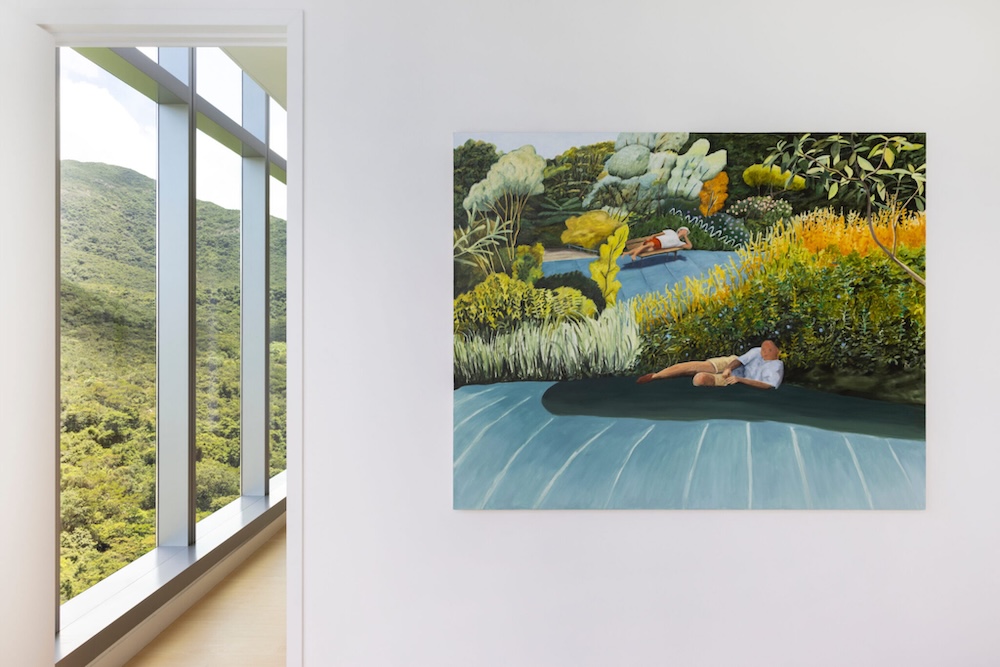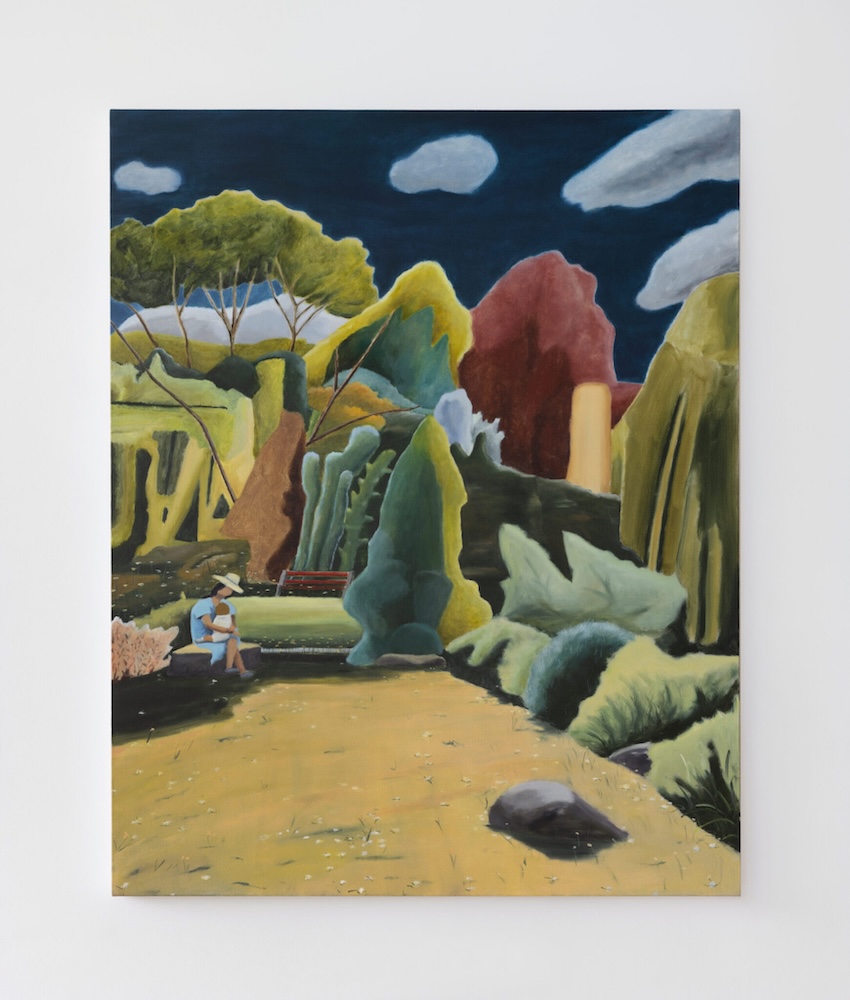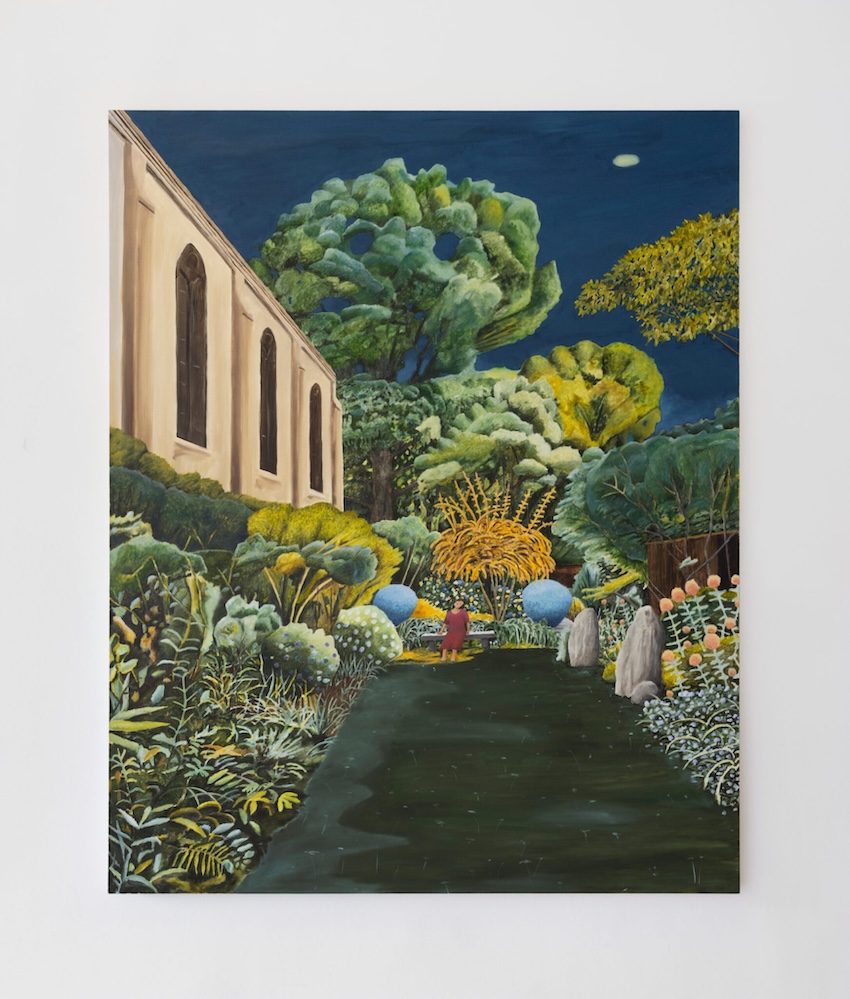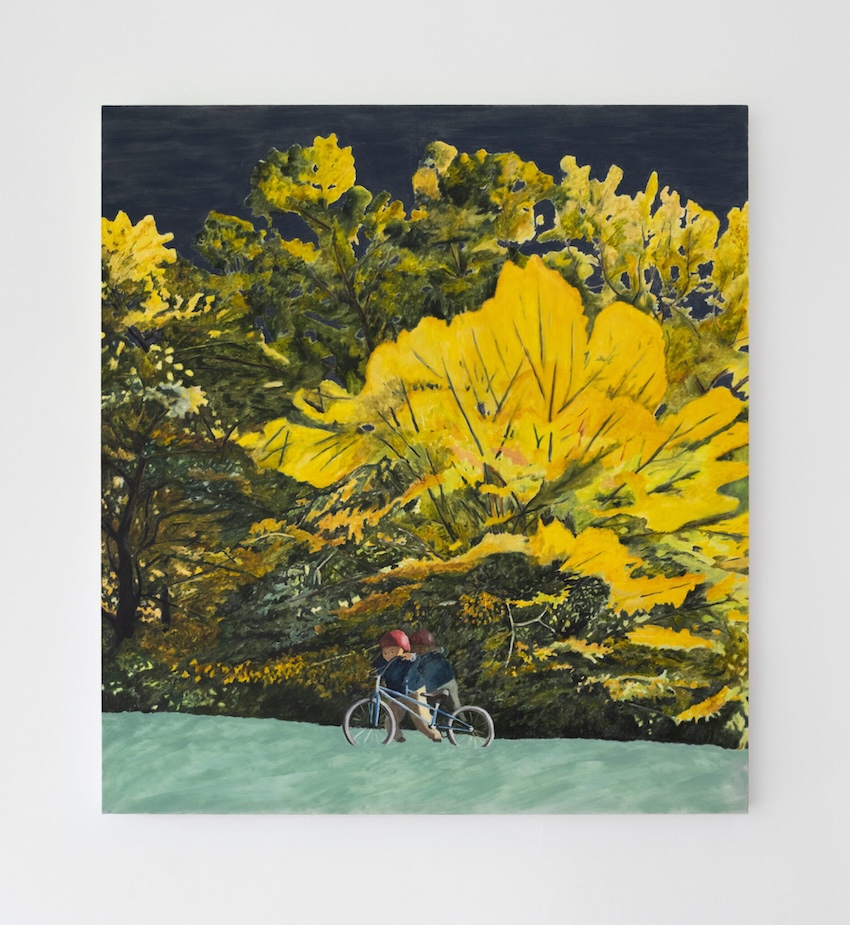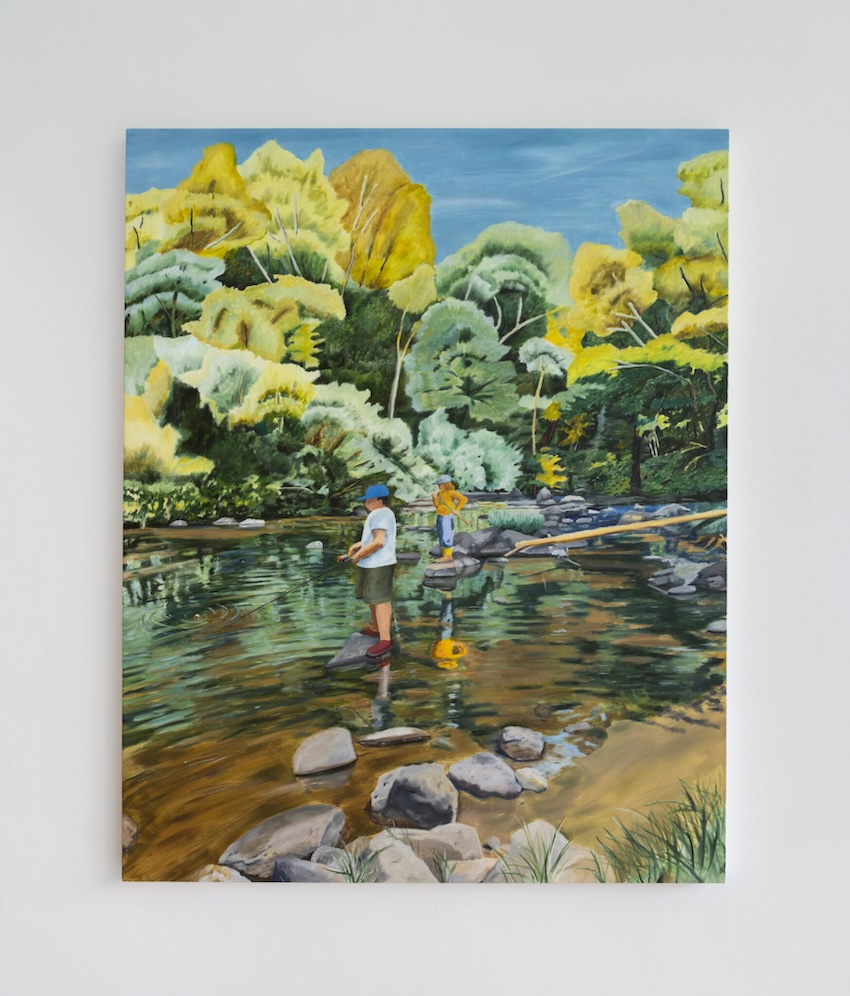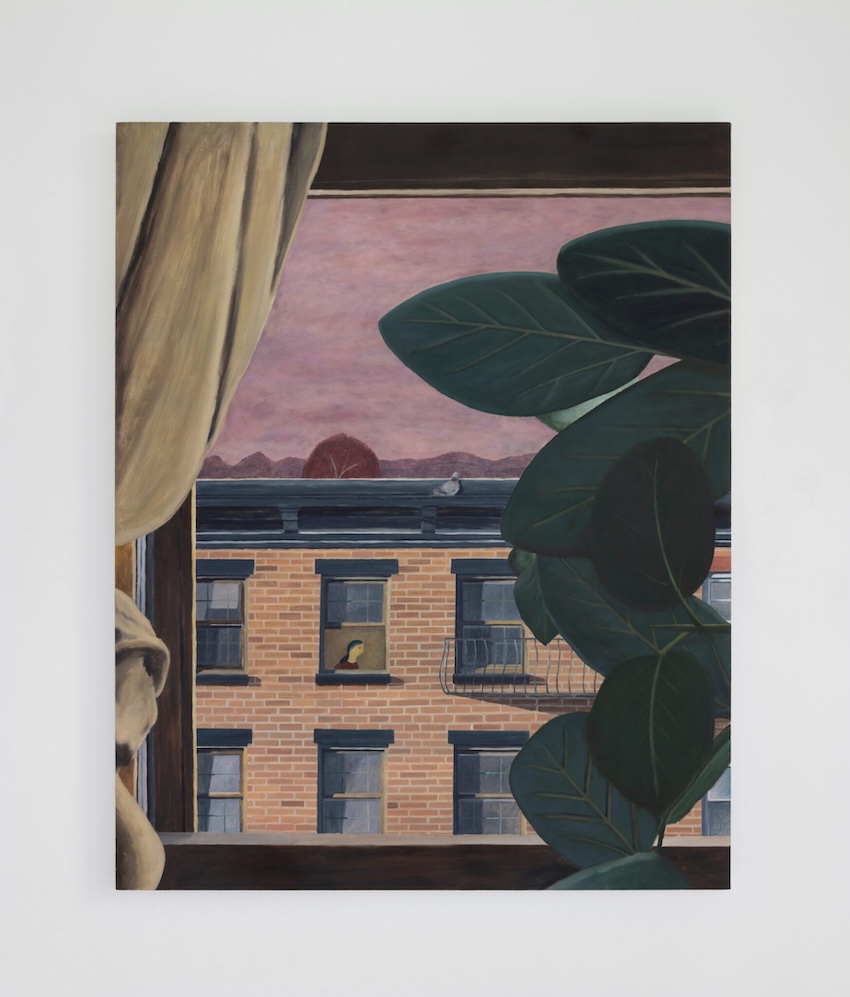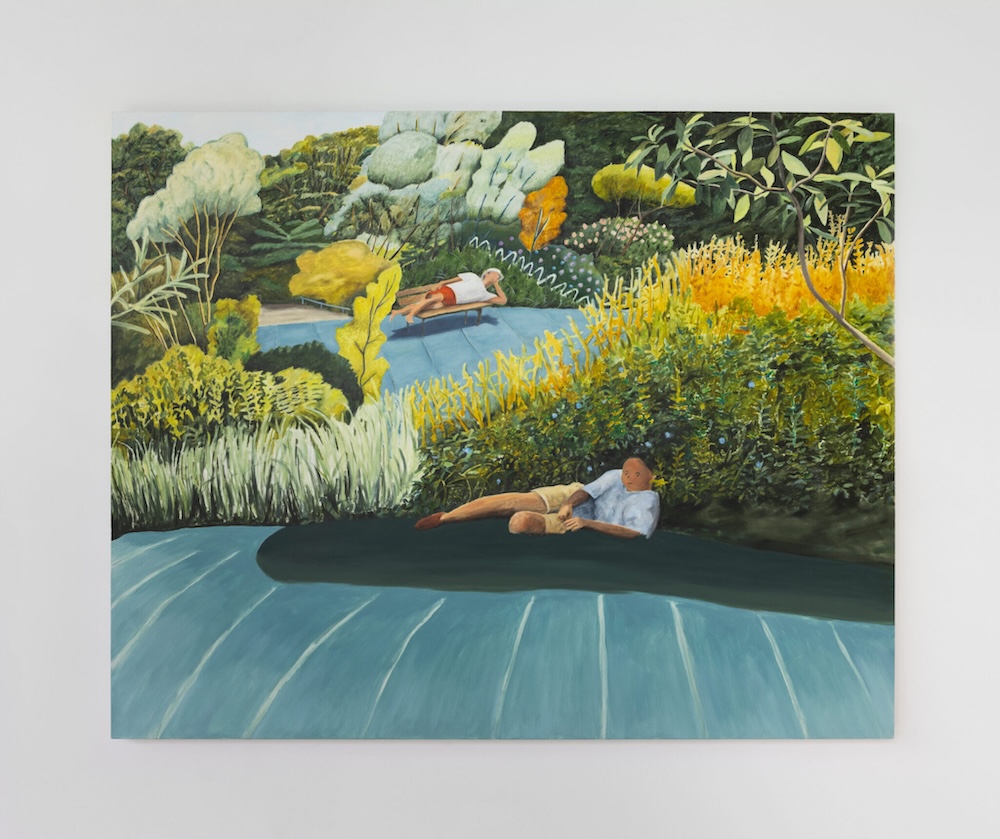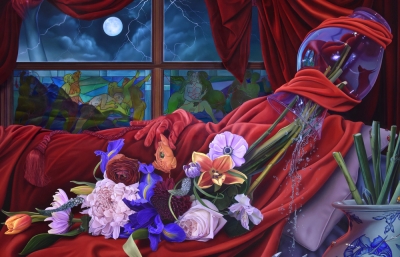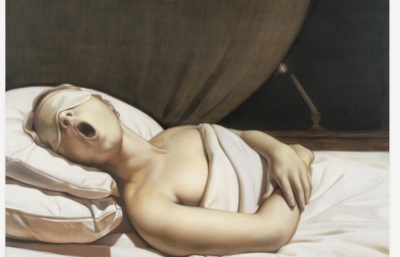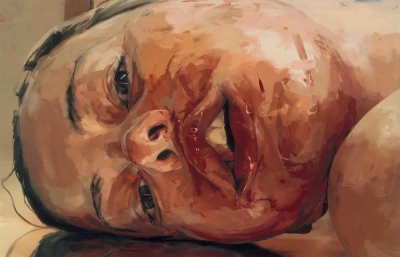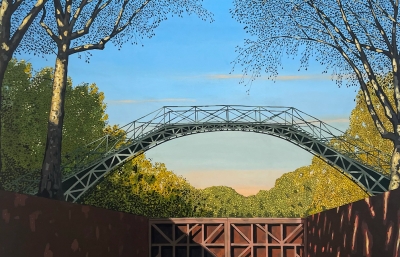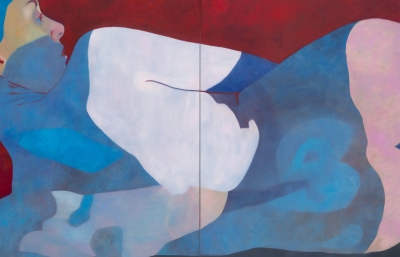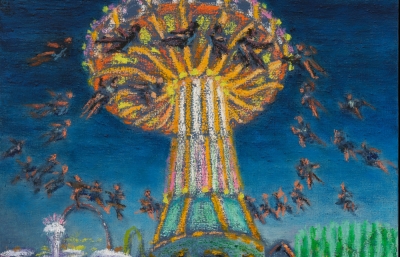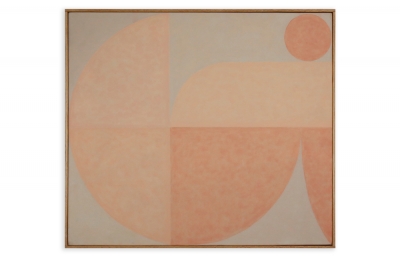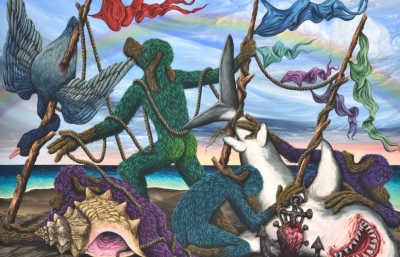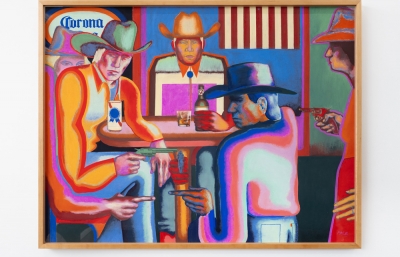Carl Kostyál is delighted to present Waiting, the debut solo exhibition of Hiroya Kurata with the gallery, opening July 2 and on view through August 2, 2025.
“Drawing on memories of domestic life and suburban observation, Hiroya Kurata’s paintings isolate the quiet intensities of the everyday. His figures—often depicted alone, unguarded, in moments of drift or stillness—occupy gently distorted environments rendered with atmospheric depth and a careful play of light.
The works in ‘Waiting’ sit between landscape and vignette, animation and atmosphere. Kurata’s visual language fuses the stylised contours of manga with the compositional calm of landscape painting. Faces are rounded, features reduced to minimal marks—eyes, a mouth, a slight gesture—but the surrounding space is handled with painterly sensitivity. Light takes on an active role: filtered through trees, cast sharply across pavement, or caught in the softness of a carpet at dusk.
In ‘Arcadia’, a young girl sits on a bench in a walled garden. The scene recalls the compositional serenity of Charles Allston Collins’s ‘Convent Thoughts’, 1851, though Kurata’s subject appears more untethered—absorbed in thought rather than devotion. There is no narrative prompt, no action underway. Instead, the weight lies in the posture, the encircling architecture, and the thin edge of stillness that defines the frame.
Kurata’s use of oil is deliberate, intuitive. Skies dissolve in shifting tonal washes; trees are sketched in with a flickering lightness. In ‘Night Owl’, a youth, perhaps on his way home from school, meets the viewer’s gaze. Tension accumulates not through action, but through the charged quiet around them. The palette here—bright yellows and dark blues and greens—suggests a turning inward, a state of being both alert and removed.
The exhibition’s title draws attention to this suspended temporality. These are not scenes of waiting in the narrative sense, but images attuned to duration. As Sofia Bertilsson remarks, Kurata offers “intimate glimpses of the artist’s own everyday life, filtered through diametrical aesthetics, manga and landscape painting… These are images of a Paradise that inevitably will be lost, together with the Monsters, in the cracks of adulthood.”
‘Last Light’ exemplifies this sensibility: a suburban street flattened by evening sun, low buildings cast in orange and mauve. A singular figure is pictured by her window. It is a painting about the trace of presence—about what remains when movement ceases.”
– Gabriel Shelsky



